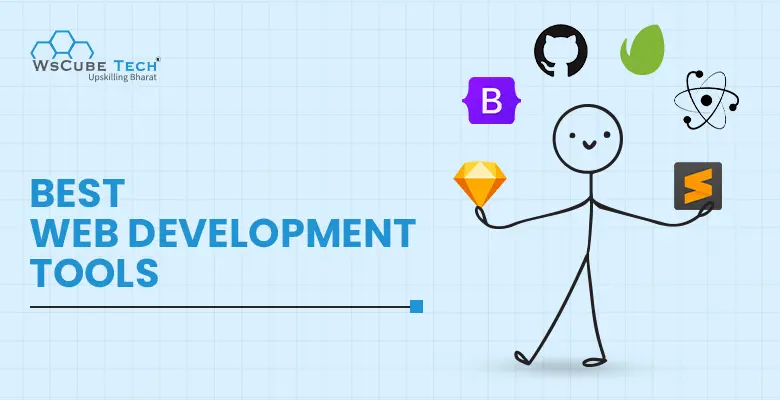Web developers are responsible for building dynamic and reliable websites and web applications. Their job is not restricted to coding but also involves other time-consuming and challenging tasks, such as managing servers and debugging errors. Fortunately, there is a myriad of web development tools to streamline the development process.
These tools simplify various complex tasks without compromising on quality. Moreover, these tools are equipped with automation and advanced security features that enhance the performance of the web app.
Whether you are a beginner looking for the best tool to help you get started or working as an experienced professional, you can find a multitude of tools. However, with so many options available, selecting the right website development tool can be trickier than you think.
This blog will explore the top 20 web development tools for beginners and experienced developers so you can zero in on the best one for your next project.
Web Development Tools List
Below, we have listed 20 website development tools that you can use for an array of projects.
- GitHub
- Sublime Text
- Visual Studio Code
- Chrome Developer Tools
- Atom
- Sass
- BootStrap
- Node Package Manager
- CodePen
- Grunt
- Envato
- Postman
- Sketch
- Docker
- Angular
- jQuery
- Kubernetes
- Gulp
- React
- Webpack

Best Tools for Web Development (2025)
Let’s talk about these web development tools in detail here:
1. GitHub

GitHub is an open-source and cloud-based Git repository hosting service with a web-based graphical interface. Groups or even individuals can use Git to collaborate on a project or revise management. As GitHub is user-friendly, beginners can also benefit from Git. Without GitHub, Git requires more command-line experience and technical prowess.
As you use GitHub, it allows you to see all the changes implemented throughout. So, you can refer to any previous version. Moreover, you can expand your network and build a brand.
There are several flexible project management tools to adapt to different projects, teams, and workflows. For building open-source software, GitHub is the best website development tool.
Its free plan has unlimited repositories and collaborators with 500 MB of storage space. For additional features, such as access to GitHub Codespaces and advanced auditing, you need to opt for a paid plan.
Key Features of GitHub Web Dev Tool
- GitHub automates processes, such as testing, CI/CD, onboarding, and project management.
- An AI-driven tool known as GitHub Copilot will suggest code completions and functions based on the coding pattern. It will automatically complete repetitive code and allow unit testing for projects.
- Codespaces includes everything required to create a repository, such as bug tracking tools, text editor, and Git commands. It is also accessible through Visual Studio Code or browser-based editors.
- GitHub lets users assign up to 10 people to work on any glitch or pull request, which makes tracking the progress more manageable.
- Its mobile app is compatible with iOS and Android, so users can manage projects on the go.
- There are different third-party apps to extend the GitHub’s functionality. GitHub users can exclusively use Azure Pipelines, Zenhub, Stale, etc.
- A code-scanning tool is used to find security flaws. There is also a security audit log to track the activities of team members.
- You can give access and permissions to accounts.
Upskill Yourself With Live Training
| Recommended Courses for You | Book Live Class for FREE! |
| Full Stack Web Development Course | Book Now |
| WordPress Course | Book Now |
| Front-End Development Course | Book Now |
2. Sublime Text
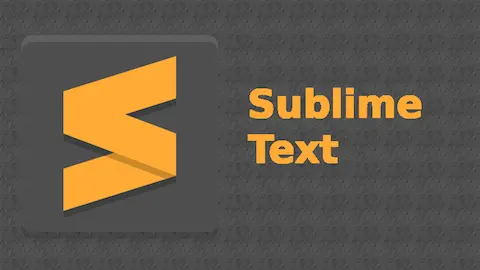
Sublime Text is among the best web development tools for beginners and aspirants who want to learn to code. This text editor is a one-stop destination for prose, code, and markup. Although the resources are lightweight, they offer advanced features that a user expects from any excellent text editor.
By enabling simultaneous editing, developers can control multiple cursors while editing several lines of code. This tool is available for free, but users need a license to use it, which costs $99 for personal use and $65 for business use per year.
Key Features of This Web Programming Tool
- Python API allows users to install external plugins for extended functionality of Sublime Text.
- Users can easily switch between functions and files.
- With a single software license, you can run the tool on any operating system or desktop.
- Minimap shows the density and shape of code to users, which helps in lengthy code editing.
- Users can find, update, rename, and change multiple code lines.
- It has smart syntax-based features that you can access via JSX, Typescript, and TSX.
3. Visual Studio Code

Visual Studio Code is an open-source code editor created by Microsoft and is compatible with Linux, Windows, and macOS. As it works on Python and JavaScript, it is also counted among backend developer tools. It makes coding way simpler and faster with its range of built-in features, such as auto-complete, Git instructions, syntax highlighting, code refactoring, and testing support.
You can easily customize it to debug the code with breakpoints, interactive console, and call stacks. Moreover, it supports code analysis tools, software interfaces, and potent web-building tools, such as PHP, Git, ESLint, and Fixer. There are also packages and extensions for added features and functionality.
Key Features of VS Code
- IntelliSense recommends code based on variables, syntax, and the programming language.
- It works with different programming languages, including Python, C++, and JavaScript.
- Code is displayed in different fonts and colors based on the programming language and keywords.
- You can work on two different projects simultaneously.
- It offers a huge library of themes and plugins.
- Allows users to perform multiple Git commands, such as pull, commit, and push. A color indicator shows changes made to the Git repository.
- Users can find commands and operations easily. For example, when you type Python, it shows all the commands of the language.
Also read: How to Become Web Developer in 2025? Beginners Guide
4. Chrome Developer Tools

If only there could be a tool to debug a program in JavaScript or edit HTML/CSS code in real-time as you assess the performance of a web page. Fortunately, there is one such tool known as Google’s Chrome DevTools that allows all of it and a lot more.
It is among the top tools for developing websites and is used for editing and debugging code. It is ideal for small and large organizations and can be used without shelling out a penny. There are varied built-in features that developers can use to view and update web page styles, optimize website speed, and change the Document Object Model (DOM).
Also, there are several helpful commands and shortcuts to navigate the UI and run different tasks. Although it’s a useful tool, we recommend taking up a Web Development Course to master it and learn the basic know-how.
Key Features of This Web Development Tool
- Use Chrome Task Manager to view the memory usage of a web page and find memory leaks that can hamper the performance of a website.
- You can save all the changes made to a web page on your computer, and it will override the data automatically.
- The device mode allows testing of the functionality and responsiveness of web design, limiting network speed and modifying device performance.
- Lighthouse is a tool to audit web pages and generate reports automatically based on accessibility, performance, SEO, and progressive web apps. Hence, users can find areas that need improvements and take appropriate actions.
- Built-in security features let users verify the authenticity of web pages by allowing them to view a website’s TLS status and SSL certificate.
- Inspect Element tool is used by web designers to test designs of web pages and layout adjustments.
- Console utility is a feature to debug JS code and create live expressions while pinning them at the top of the console to administer their real-time values.
5. Atom
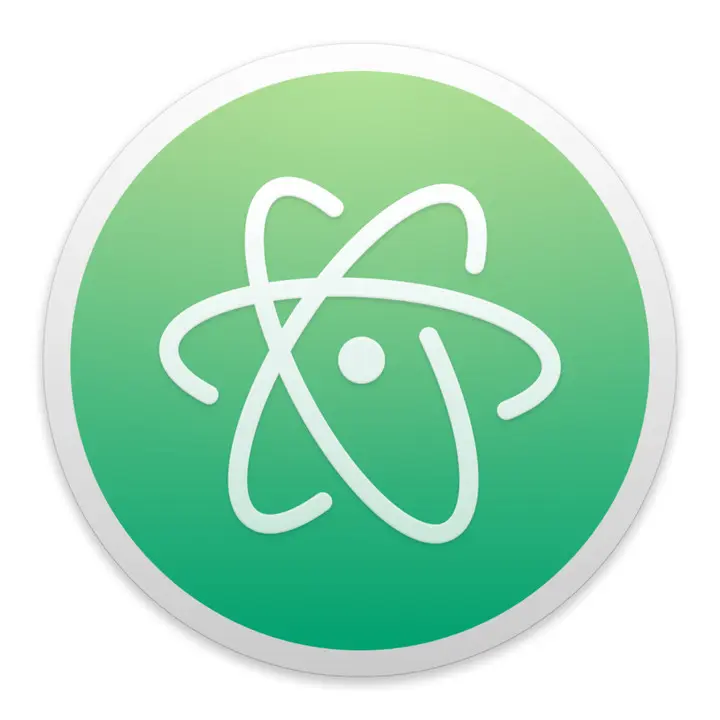
Atom once enjoyed widespread popularity among coders, but after the introduction of Visual Studio Code, fewer developers adopted it. However, that doesn’t change the fact that it is a great code editor and one of the top web dev tools.
It was created by GitHub, explaining why Microsoft pushed it down in its list of priorities. However, with frequent updates, it is considered an alternate version of Visual Studio Code. Atom is definitely worth a shot, but because it’s based on Electron, some can face issues with large files and projects that may run slowly.
Key Features of Atom Web Development Tool
- Users have more options than just building and using custom themes.
- It is a free editor available for immediate download.
- The system offers pre-installed 4 UI and 8 syntax templates for Atom.
- One of its best features is smart auto-completion.
6. Sass

Sass is a popular preprocessing scripting language that compiles CSS codes to extend the functionality of a CSS file. Developers consider it among the best website development tools because it is robots, reliable, mature, and stable. It allows them to not only add variables but also supports multiple and multilevel inheritances. Moreover, it is also used to enhance an existing CSS website and its functionality, such as functions, nested rules, and mixing.
Sass offers advanced features, such as autoformatted output, control directives for libraries, and external libraries, making it perfect to work with CSS. Developers also use it to write maintainable codes, which reduces the time CSS needs for coding.
If you are looking for a reliable tool for frontend design, look no further, as Sass comes with several features for manipulating colors and UI components. You can share designs across projects for a seamless project management experience.
Key Features of Sass Web Dev Tool
- It is extensively used by tech companies and professionals, which contributes to its large community that supports users in solving issues and making improvements.
- Allows access to powerful frameworks, such as Susy, Bourbon, and Compass.
- If implemented in C/C++, it enables integration with different languages.
- It is easy to configure and doesn’t require extensive training.
Also read: Web Design vs Web Development: What’s the Difference?
7. Bootstrap
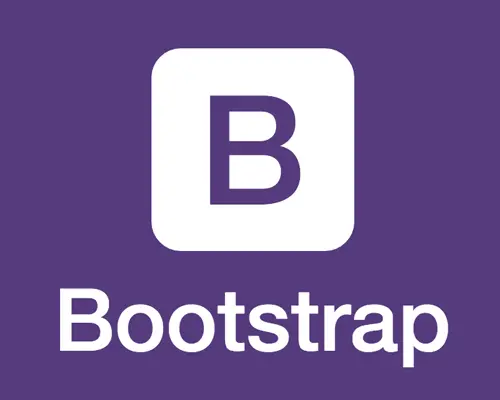
Bootstrap is one of the commonly used frontend development tools for building responsive web applications. It is an open-source library of CSS, HTML, and JavaScript utilities used for web design components and functions. This extensive UI toolkit offers various built-in and ready-to-use elements. So, web developers can save ample time as they don’t need to write the code manually.
With basic knowledge of HTML, CSS, and JS, anyone can easily set up and navigate Bootstrap. Experienced web developers use it to create functional layouts and responsive designs within a short span. Proficient developers can take its magic to the next level and make the best of this tool through customization. It also supports web development tools, such as jQuery and Sass.
Key Features of Bootstrap Front-end Developer Tool
- It has a predefined grid system, which saves a lot of time for creating one from the ground up. You don’t have to enter media queries in a CSS file but simply make a grid within an already available one.
- Can be customized easily using built-in variables, color systems, CSS variables, Sass files, and other options.
- Find comprehensive Bootstrap documentation on its website for detailed instructions on using the tool and its features. Developers can also copy and change the code samples in the documents to meet their project requirements.
- Offers a set of JS libraries, making it easier to use alerts.
- Compatible with modern browsers, which reduces the bounce rate and boosts search engine ranking.
- Resizes images automatically according to the size of the screen.
8. Node Package Manager
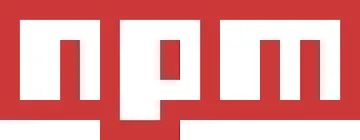
NPM, or Node Package Manager, is a JavaScript software for web programming used for sharing and deploying local or global packages. NodeJs developers use this tool to discover packages with reusable components and gather them in unique ways. They also use it to install code packages for server-side projects or networking applications.
NPM is used as a command-line utility tool to communicate with a repository that helps in the package and plays a crucial role in collecting the system beneficially and powerfully. Project managers use the same workflow to handle public and private code in the team.
With NPM, developers no longer have to write new code for every functionality of the project, which simplifies the development process. It’s an excellent project management tool that is perfect for medium to large teams.
Although its free version comes with unlimited public packages, you need to buy paid plans for enhanced functionality.
Key Features of NPM
- It is a repository for open-source projects, which allows users to share the source code with others. A few packages in the NPM repository are React, Angular, and jQuery.
- With the command-line interface, users can install and control package versions and dependencies of packages.
- Users can control team permissions and integrate their workflows.
- It can find security flaws in a project and generate an assessment report.
- NPM also offers a publicly accessible database of JS packages, which include their metadata and software.
Interview Questions for You to Prepare for Jobs
9. CodePen

CodePen is among the top tools for frontend developers as it is intuitive and easy to use. It offers multiple functionalities to design frontend web pages. As it offers all the essential features of an Integrated Development environment in a web browser, developers use it to build an entire project.
Professional developers can also use this tool to make the development process hassle-free. It is meant for frontend projects, so if you want to design client-side elements, CodePen should be your go-to solution. This online code editor supports HTML, CSS, and JavaScript.
Key Features of CodePen Web Dev Tool
- Open-source SAAS instrument.
- Completely free, so you can start using it without a second thought.
- Offers internal learning resources.
- Has an intuitive and simple interface.
Also read: How to Become Web Developer in 2025? Beginners Guide
10. Grunt
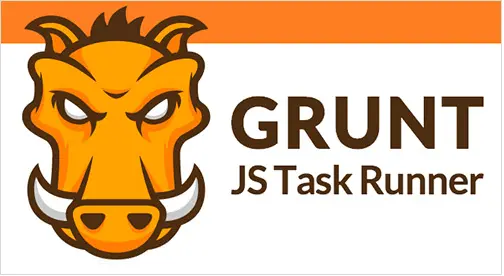
Grunt is a popular JavaScript task runner used to automate repetitive web development tasks, such as minification, unit testing, linting, and compilation. You just have to install and configure the task using a Grunt file, and your tasks will be easy. It is a flexible and widely adopted web development tool used by developers to complete a project efficiently within the stipulated time.
Grunt is known for its ever-growing repository of plugins, which creates a great coding environment for developers. They use Grunt to implement coding style guides throughout the code base of a project, which adds readability and consistency to the code. Also, it offers image optimization and linting capabilities.
It is a free and easy-to-use tool that you can download from its official website, through NPM, or any NodeJS/Javascript Package Manager. It is released under the MIT license and is available for free on GitHub. There are several plugins too that you can use or create your own plugins.
Key Features of Grunt Web Development Tool
- Needs a single command to carry out different tasks automatically.
- Developers can add and publish Grunt plugins on NPM.
- Developers can create, extend, and change tasks according to their requirements. Each task has distinct configurable settings.
- As the project expands and more codebases are added, Grunt helps manage complex development processes.
- Allows access to an array of plugins to perform JavaScript tasks on static content.
11. Envato

Envato is typically a frontend development tool with a great collection of built-in HTML5 templates for developers to design user interfaces. It supports almost all popular programming languages, including HTML, CSS, and JavaScript, along with a number of web application frameworks, hence offering templates for Bootstrap, Laravel, VueJS, and Angular.
Its collection of 1000+ readymade HTML5 templates makes it a go-to choice among developers who use it to optimize CSS and JavaScript coding techniques. Thus saving ample coding time and enhancing page speed scores.
Key Features of Envato Web Design Tool
- Several built-in features for front-end developers.
- Thousands of HTML5 templates.
- Supports most programming languages.
12. Postman

Postman was initially a Google Chrome extension that has now marked its place among the top application programming interface (API) testing tools. It opens an easier way for developers to work with APIs, including building, testing, sharing, and modifying APIs. There are built-in features that developers can use to monitor, debug, and run requests, along with shared workspaces for improved collaboration.
Postman is known for its user-friendly interface for inspecting responses, sending HTTP requests, and testing API endpoints. Using these features, the tool streamlines the web development workflow and maintains API reliability.
If you are looking for free web programmer tools, you can try its free version with basic functionality. However, for advanced features, choose from the three paid plans. The basic plan costs $12/month per user with a 30-day collection recovery and a single custom domain.
The professional plan costs $29/month per user with single sign-on (SAML) and basic roles and permissions. Lastly, an Enterprise plan costs $99/month per user with domain capturing and analytics tools.
Key Features
- Its Newman feature allows users to integrate APIs with popular code deployment pipeline tools, including Jenkins, Bamboo, and TeamCity. Also, users can upload files and create custom reports using this feature.
- Collaboration features, such as commenting, workspace, and team discovery, improve team collaboration.
- Using API documentation tools, developers can automatically create professional API documents shared publicly or exclusively with team members. Customers can use this proper documentation to integrate API.
- You can visualize API data using reports, which include documentation, testing, and monitoring. These reports enable users to check the performance and service-level agreement (SLA) compliance.
- API governance allows developers to find any security glitches or inconsistencies during API design and testing. Hence, they can create more secure and top-quality web applications.
- Users can navigate the interface, manage APIs, and see the tasks of other team members in the workspace.
Also read: What is Full Stack Development? 2025 Guide
13. Sketch

Sketch is one of the best website development apps for macOS used for designing pixel-perfect graphics. It comes with a robust vector-based design toolkit to simplify the development of different types of prototypes and interfaces. It allows constant resizing and more, offering a one-stop solution for all your design needs.
This tool also possesses the ability to export code and presets and integrate with numerous plugins, non-destructive vector editing, and collaborative tools. There are two paid plans- the Standard plan costs $9/month per editor or $99/year per editor.
They offer unlimited free viewers, and developers can use them to assess the design. There is a Business plan as well for 25+ editors. You can opt for a 30-day free trial to try Sketch before buying a premium plan.
Key Features
- Developers and designers can work together on a single project in real time.
- Using the handoff feature, developers can copy design style values and export assets.
- There are various third-party plugins and integrations that improve its functionality and workflow.
- Allows users to import data from text files into mockups.
- Creating mockups is simple due to drag-and-drop features, such as Smart Guides for accurate alignment and Sketch Symbols for designing reusable design components.
14. Docker

Docker is used to deploy applications in virtual containers. It is a free tool that enables developers to deploy and scale apps quickly across multiple environments by combining the source code of an app and the libraries required to run it. This cuts down the time required to install the code and dependencies separately.
The tools can be used for free with unlimited public repositories. There are three paid plans, too- The Pro plan costs $5/month, the Team plan with advanced features costs $7/month for each user, and the Business plan with centralized management and advanced security capabilities costs $21/month per user.
Key Features
- Dockers is known for its portability, which allows users to build and install complex web applications on a machine and evaluate their performance.
- It offers an automated container builder, container versioning, and reusable container templates, along with an open-source repository of user-made containers.
- Using Docker containers and cron jobs, users can automate their tasks. They can also save ample time by avoiding repetitive tasks.
- It has a wide community, regular contributors, and a dedicated Slack channel.
15. Angular

Angular is one of the best tools for front-end development introduced by Google. It can work with backend technologies and combines user interface and business logic. It is used to create an array of apps, such as progressive web applications (PWA), single-page applications (SPA), and large enterprise apps. As you will use this cross-platform solution, you will realize it’s not only versatile but also offers amazing improvements and functions.
Angular is written in Typescript, which helps developers maintain consistency and write cleaner code. It offers ample UI components for web designers that speed up the web app development process. Also, developers can initialize, build, and scaffold Angular apps directly from the command line because of its ease of use. Moreover, with its two-way data binding function, one can change the app data using UI.
Key Features
- It supports progressive web applications, which means Angular web apps are compatible with Android and iOS devices.
- With custom directives, users can improve HTML and CSS capabilities to build dynamic web apps.
- Two-way data binding allows singular behavior for the app. Hence, it reduces the risk of errors.
- Dependency injection (DI) is a feature used to split an app into a group of components that can be injected into one another as dependencies.
- Due to various well-organized modules, conducting unit testing is hassle-free.
- RxJS is an effective way to share data while reducing the number of resources required for the purpose.
- Its powerful CLI makes the job easier for developers with its set of coding tools. There are third-party libraries, too, to address complex issues.
16. jQuery
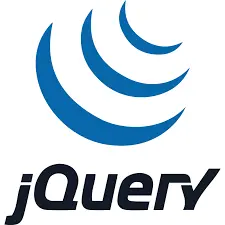
jQuery needs no introduction. This lightweight JavaScript library is an essential component to simplify HTML document manipulation, animation, and event handling. It was introduced in 2005 to overcome common issues faced by JavaScript, such as unapproachable syntax, browser inconsistency, and a few other complex aspects, which make JS less functional. jQuery is a cross-platform solution that makes the frontend development process easier.
It has a concise syntax, which lets developers build more interactive and dynamic web pages. Also, its extensive plugin ecosystem enhances its capabilities and allows users to add cutting-edge features to their projects without writing lengthy code. jQuery offers a wider scope for navigation documents and animation while addressing issues of JS.
Key Features of jQuery
- Offers a wide range of event-handling methods.
- Makes DOM traversal and manipulation easier.
- Includes cross-browser compatibility and consistent behavior.
Also read: Types of Web Development in 2025: Full Guide
17. Kubernetes
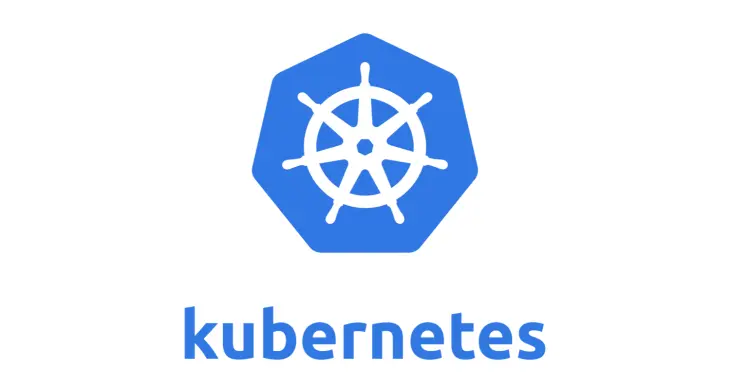
Kubernetes is another open-source container orchestration platform used for deploying, scaling, and managing modern web applications. The tool is adept at organizing application containers into logical units to ensure easy discovery and management. Using its features, developers can deliver applications regularly and transfer workloads. With consistent app monitoring and deployment, it avoids a total outage.
Key Features of Kubernetes
- Mounts the selected storage system to enhance user experiences and reduce latency.
- The tool can run across different infrastructures, which include on-premise data centers and private/public/ and hybrid cloud.
- Improves application performance through regular monitoring and replacing any unhealthy containers.
- Kubernetes Secrets stores critical data, including SSH keys, authentication tokens, and passwords.
- Users can build and update secrets without rebuilding container images or exposing them to stack configuration.
- It assesses applications to mitigate the chances of any potential errors or issues.
- Scales each container automatically based on custom metrics and resources available.
- Exposes containers to their IP addresses and DNS names and enables load balancing during high traffic to ensure stability.
18. Gulp

Gulp is a popular JavaScript-based tool that streamlines and automates the development process. This is one of the commonly used tools to develop website that performs various tasks. It also handles resources that are a part of a larger set of instructions.
Key Features of Gulp
- Way more flexible
- Faster due to streams.
19. ReactJS

React is an open-source JS library used to create reusable and modern UI components. It is an adaptable, declarative, and effective library that allows users to write and pre-build components easily. This speeds up the development process and makes it more efficient. This frontend framework takes care of the view layer of an application.
Moreover, it is used for server rendering with NodeJS and power mobile apps with React Native. Using React VR, developers can build virtual sites that offer 360-degree experiences.
Key Features of ReactJS Web Development Tool
- Virtual Document Object Model (DOM) is used to arrange XHTML, HTML, or XML-based documents into a proper structure, which is more acceptable to browsers while parsing through elements of a web app.
- Its rendering feature reduces the page load time, which boosts website ranking on SERPs.
- The components of React have their own logic and control, making it easier to track the code for complex tasks.
- You can switch between versions easily. Facebook’s ‘code mods’ automate most of the process.
- The user-side data can be simultaneously represented on the server side as well, making it a lightweight tool.
- Due to its one-way data binding, troubleshooting is much hassle-free in React.

20. Webpack
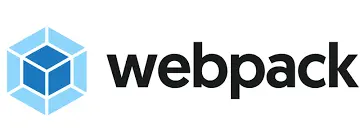
Webpack, one of the well-known web programming tools, is a module generator for web applications. It comprehends JavaScript and JSON and optimizes CSS, JS, and other assets. This improves website performance and page loading speed. It follows a modular approach and supports code splitting, which enables efficient management of dependencies. Therefore, it is a crucial web development tool for better workflow.
Also, it uses a loader to transform frontend files, such as CSS and HTML, into modules, which provides users with a comprehensive solution.
Key Features of Webpack
- Comes with an extensive plugin ecosystem and configuration options.
- Bundles and optimizes assets to enable faster loading.
- Output tells Webpack about the location and structure of the created bundles.
- Plugins offer several features, such as minifying, printing, etc.
- Supports code splitting and lazy loading, which enhances performance.
Conclusion
Web development tools can take different forms, including code or Text editors, web frameworks, container software prototyping, version control systems, libraries, and debuggers. Irrespective of the form, their ultimate goal is to reduce the complexities of the web development process and improve the workflow. The key is to select the tool that aligns with your project requirements and budget.
Web development is an exciting and lucrative career. However, you need to sign up for a reliable Full Stack Web Developer Course to gain practical knowledge and learn the nuances of building powerful websites. Also, a comprehensive training program will help you gain hands-on experience through projects, so you can kickstart your career confidently.
Read more blogs



